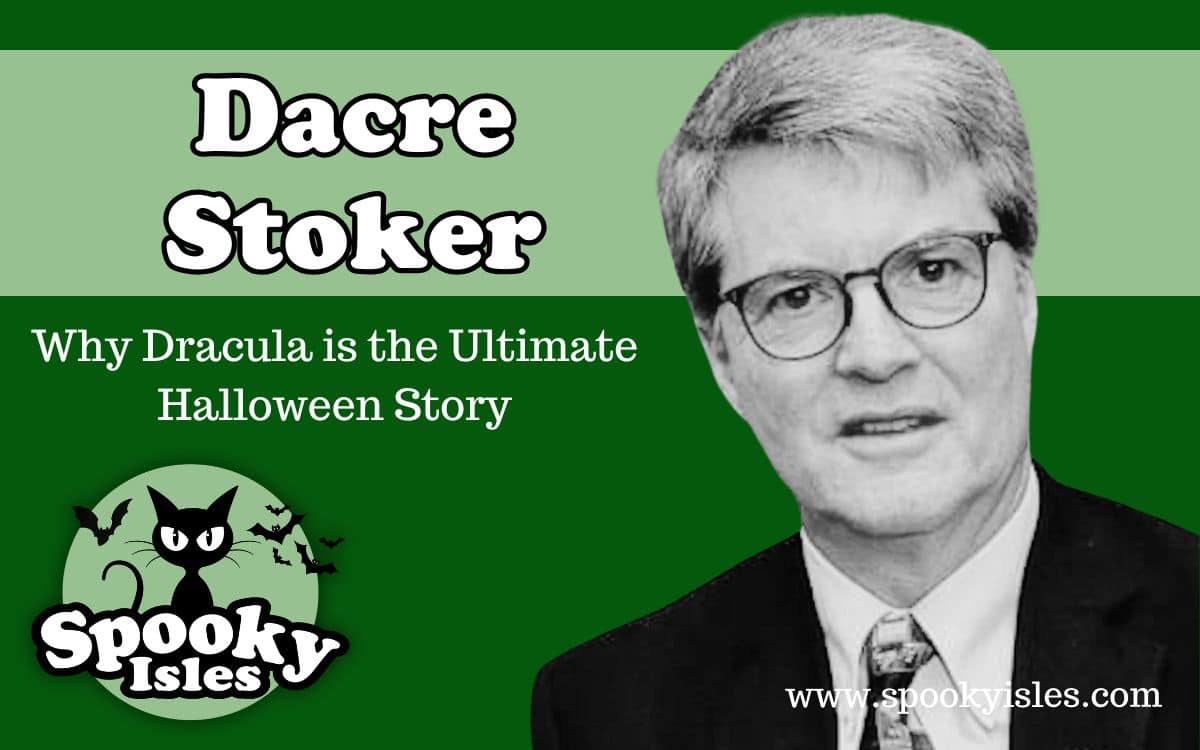Dacre Stoker, great-grandnephew of Bram Stoker, tells the Spooky Isles Podcast why Dracula remains the ultimate Halloween story, rooted in folklore, fiction, and Gothic horror
With Halloween 2025 fast approaching, the Spooky Isles Podcast welcomed Dacre Stoker, great-grandnephew of Bram Stoker, to explain why Dracula remains the ultimate Halloween story — a tale rooted in folklore, mystery, and the dark imagination of its creator.
“It’s the right time of year to be talking Dracula and Bram Stoker,” Dacre told us.
“He was more than Dracula, but look, he was an Irishman and Halloween season was actually invented in Ireland. So I’ve actually been taking people to go visit sites in Ireland where Bram was raised, where he went to school, where he worked… What keeps me going is bringing people who are interested in the literature, in the films, but they want to see where it all started.”
And this Halloween, he’ll be doing just that — leading a special Mysterious Adventures Tour to Romania, including a Vampire Ball inside Bran Castle on Halloween night.
Folklore, Fear, and the Irish Roots of Halloween
For Dacre, the Irish origins of Halloween are essential to understanding why Dracula is such a seasonal classic.
He links it directly to Bram’s own influences.
“Lady Jane Wilde, Oscar Wilde’s mum, good friends with Bram. She actually ran literary soirées that Bram would attend. I believe she was the sort of literary mentor to Bram. There was a book she wrote about Irish superstition and folklore that was in Bram’s personal library and was also one of the books Bram listed in the back of his notes.
“In that book, there’s a heading about Irish superstition being very similar to that of Transylvania that included werewolves, vampires, and witches.”
That fusion of Irish superstition and Transylvanian legend gave Bram Stoker the raw material for the novel we now associate so strongly with Halloween.
The Name That Changed Everything
Dacre revealed that Dracula almost had a very different name.
“In Austria, they called vampires Wampyr. Joseph Sheridan Le Fanu wrote Carmilla, based in Austria. Bram wrote articles, theatre reviews for Liffey News newspaper in Ireland. So it comes together in this way, that that was Bram’s original name.
“And we’ve actually seen it in the notes in about eight places crossed out and replaced with Dracula. And that came from a book by William Wilkinson… there was another reference… that actually mentions Dracula again being referred to as a devil.
“That’s putting pieces together, David, and why we think we ended up with the name Dracula instead of Vampyr.”
The result, as Dacre admits, was fate.
“I don’t think it would have had, and I hate to say it, the bite. It’s really got a strong name.”
Lost Pages and a Fiery Ending
Halloween is also about hidden horrors, and Dacre has uncovered plenty in Bram’s lost notes.
“The transcripts started on page one hundred and two. So obviously there are 101 missing pages… Chapter one, all these series of letters. Chapter two, no question, it’s the short story Dracula’s Guest… The third chapter is actually the Harker character recovering… he goes to the Munich dead house… and then the opera, The Flying Dutchman… foreshadowing for the trip of the Demeter.”
But the real shocker is the ending that never made it to print.
“Right after Harker and Morris take control of the gypsy wagon… Morris stabs the Count with a bowie knife, Harker slits his throat, he crumbles into dust.
“Right after that, never published, a volcano erupts and lots of destruction, the castle goes down. But that was deleted.”
A volcanic eruption as the climax of Dracula — it’s hard to imagine a more fitting Halloween finale.
Whitby’s Fog and Bran Castle’s Shadows
Asked why Bram changed Dracula’s arrival point from Dover to Whitby, Dacre was clear.
“He’d originally planned for Dracula to arrive in Dover. But when he went to Whitby and heard about the Russian schooner that wrecked on Tate Hill Sands, he changed it.
“Whitby has that Gothic horror vibe — the abbey, the church, the fog. My God, it’s like a movie with the special effects that are for free.”
On Bran Castle, the centrepiece of Dacre’s Halloween tours, he stressed the real link.
“It is debatable if Vlad Dracula ever stayed there. But Bram did see sketches of Bran Castle in books in the London Library. I am convinced he used this as his image for describing the exterior of his fictional castle Dracula.”
A Halloween Ball in Dracula’s Castle
Dacre is now inviting fans to join him in Romania this October.
“This Halloween with Mysterious Adventures Tours, we have a really cool 12-day adventure tour, but we also have a party, David, on 30 October, which actually stretches into Halloween.
“Starts at 6 PM on the 30th, goes to 2 AM on the 31st. We’ll be spending a good time partying, eating, drinking, and doing interesting entertainment that we’ve got lined up for people — telling the story, connecting Vlad, connecting Bram, connecting the Count.”
For anyone wanting the ultimate Dracula Halloween, it doesn’t get better than this.
- Book your Dracula adventure with Dacre Stoker: Mysterious Adventures Tours
- Listen to the full interview here: Spooky Isles Podcast with Dacre Stoker
What did you think of this article and podcast about Dracula? Would you spend Halloween at Bran Castle? Tell us in the comments section!



